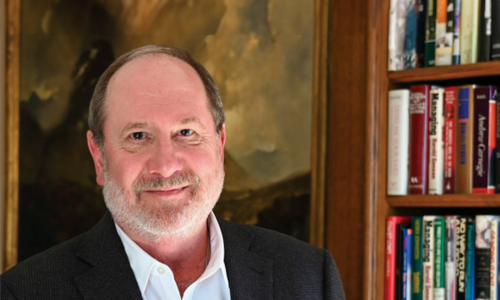Questions of coordination and collaboration invariably arise in the wake of natural
disasters. How can public and private entities work together? What resources should
be shared, and how? How should volunteers be utilized? Who’s going to pass out water
bottles? Who’s going to move people to shelters? How long can a private business’
property be used as a relief staging area, given the impact on customers and profitability?
Ultimately, the question is: Who’s in charge?
Glenn Richey, professor of supply chain management, says developing a governing framework
that bridges the communication and management gap between public and private entities
would give relief efforts a unified voice instead of multiple, disjointed voices.
In addition to his research, he has some personal experience. Richey lived in Tuscaloosa
during the devastating April 27, 2011 tornado and on the Alabama Gulf coast during
1979’s Hurricane Frederic.
Richey is co-author of the paper “Disaster Resilience Through Short-Term Collaboration,”
presented in March at the National Hurricane Conference in New Orleans. He called
on federal, state, and local government agencies and private businesses to work together.
“We need to ensure that everyone is focused on one outcome, understand the roles of
each group, and build their goals together so that they can achieve the protection
of human life,” he says.
But who manages this group?
“Because it’s such a disparate group of individuals, it has to be a board of people
that doesn’t already exist and can be altered and enhanced quickly,” Richey says.
At the National Hurricane Conference, Richey met privately with government and corporate
representatives. He learned just how great the divide is and likened the conversations
to “marriage counseling.”
“You get into the room and you start asking questions about relationships and ask
‘Tell me something good about the relationship,’ and they say, ‘Grrr,’” Richey says.
“Then you ask, ‘Tell me something bad’ and they have a litany of things.”
A major issue is that some public entities consider companies being profitable during
a disaster situation as a bad thing.
“The goal is to get these people together, but some level of animosity still exists,”
he says. “Public entities recognize that there are things that private entities can
do, but they can’t. And there are certainly a number of things that private entities
can’t touch. They need to ask each other ‘what’s your role in the occurrence? I’m
doing this. You’re doing that.’ The government is expected to do this. Private industry
is expected to do that.
“There’s nothing worse in one of these events than having merchants in the room and
having someone from Homeland Security or FEMA say, ‘We don’t do it that way.’ Then
the government wants to take a retail facility for three months and you’ve got managers
saying, ‘I’m not going to make my quota.’ This is essentially a call to arms for businesses
and government to get together.”

 Degrees & Programs
Degrees & Programs
 Faculty & Staff
Faculty & Staff
 Career Development
Career Development
 Recruiters & Industry
Recruiters & Industry


